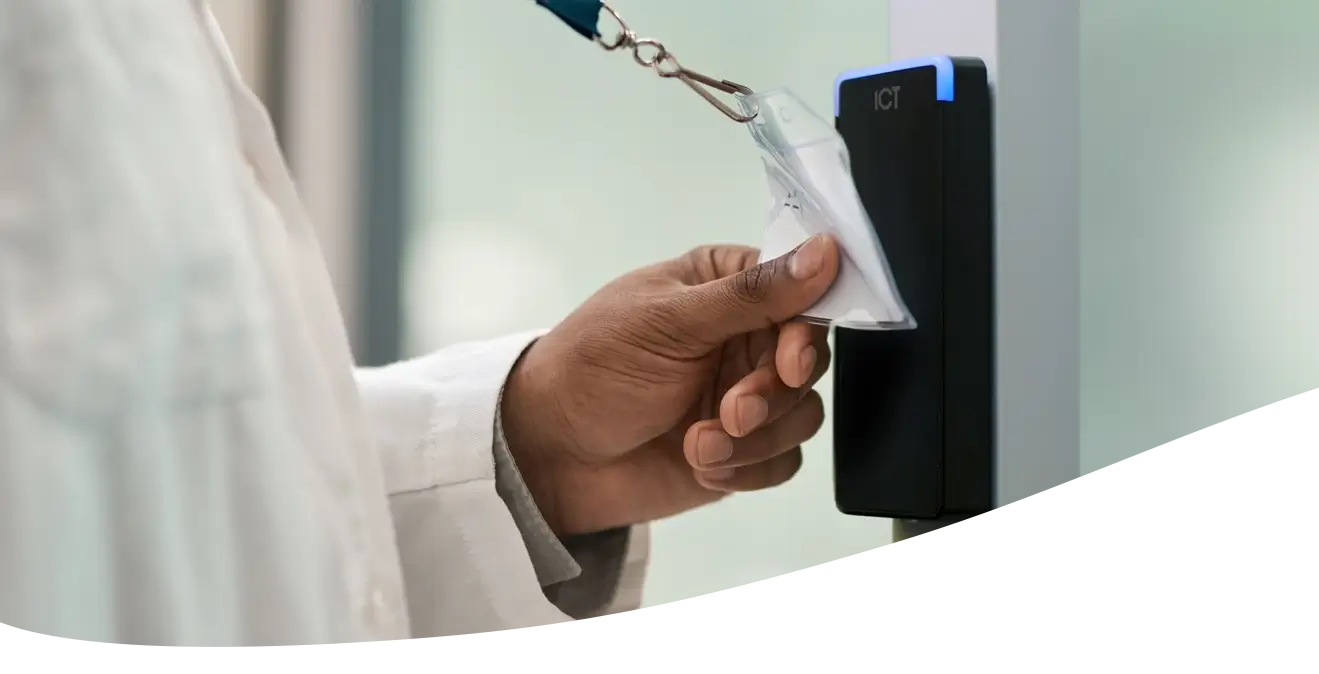
Door Interlocking: A Simple, Built-In Approach to Securing Hazards.
We’ve all seen those sci-fi movies where the outer airlock door needs to be closed and the area pressurized before the internal door will open. But did you realize you were watching door interlocking at work?
At face value, this may not seem as impressive as more visible types of security, but it’s a perfect example of using technology to make separate parts of an access control system more valuable by using them together.
Traditionally you needed separate systems to control interlocked doors, but with this feature built into ICT’s Protege platform, it’s easy to use door interlocking as part of your access control and building automation solution.
What is door interlocking?
Door interlocking is used to restrict access between hazardous and safe areas, by ensuring only one of the connected doors can be opened at any one time. If one door is open, the other must be closed, meaning there is never a direct path open to the outside.
You may have also heard of door interlocking referred to as a mantrap or sally port. ‘Mantrap’ is self-explanatory, but the name sally port has historic military origins.
Interlock use cases
These days interlock can be used in many scenarios including clean rooms, correctional facilities, wildlife enclosures, and data centers. While interlocks at a zoo are designed to keep animals inside their enclosures, other environments use them to keep people or objects outside, such as restricting access to authorized users in areas at a data center, or as a safe, intermediary space to make sure weapons and other contraband stay out of prisons.
Door interlocks can also serve a dual purpose. In clean rooms they keep external contaminants such as dust outside, while ensuring hazardous materials are contained inside the restricted area.
Watch our video below to see how door interlocks can work using a clean room as an example.
ICT’s integrated solution
Historically, systems have required additional tools to enable door interlocking, and they wouldn’t work together with access control.
Unlike other solutions, ICT’s integrated platform needs no additional software* and door interlocking can be configured in just a few short steps. And as an additional benefit, with only one system to program and manage, it makes reporting easy.

It's simple to combine the interlocks with two-factor authentication if increased security is required. You can incorporate building automation so that HVAC or lighting functions are triggered when an interlock is opened. Or you can even use sensors to check that pressure or temperature levels are correct before allowing the door to unlock.
Additional features
As well as automation, integrations and two-factor authentication, there are other features available with an ICT system that add value when used in conjunction with door interlocking. These include:
- Dual Custody where an object is treated the same way as a human user, so you can control and monitor the flow of objects through a building
- Compliance Types which ensure people entering a restricted area have the appropriate current training and certification
- Anti-Passback to prevent tailgating
- Area Counting to limit the number of people in an area
- Loiter Areas which allow users to transit through an area but prevents them from remaining too long
- Dual Authentication where two authorized users must supply credentials to gain access
Conclusion
ICT’s unified access control, intruder detection, and building automation solutions mean that door interlocking has moved from simple containment to a multi-functional system that is increasingly safe, automated, and accountable.
You can find out more about this and see how quick and easy it is to configure interlocks in Protege GX on our Door Interlocking page.
* Door interlocking in Protege WX requires advanced mode to be enabled. This is as simple as completing your Protege WX certification.

